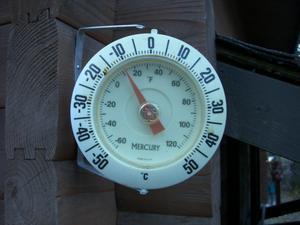 If you think it’s cold outside today, this is just the tip of the polar air mass headed south toward Tennessee.
If you think it’s cold outside today, this is just the tip of the polar air mass headed south toward Tennessee.
Exceptionally cold air from the Arctic Circle is sweeping south, bringing with it “shockingly cold” temperatures, according to the National Weather Service hazardous weather warning issued today.
The NWS predicts that by Thursday, the daytime high temperature will remain in the twenties, with northwest winds of 10-20 mph: that translates to a wind chill temperature a high temperature hovering around zero. By Thursday night, the low will range from -0- to -5- degrees with a wind chill coming in at minus 10 degrees.
NWS forecasts suggest that the greater Clarksville area will sustain below freezing temperatures from Wednesday night through Saturday, when temperatures pushing into the low 30s will feel like a heat wave.
Tennesseans, who will feel the brunt of cold normally reserved for more northerly states, “should take precautions … against very cold wind chill temperatures. Limiting outdoor activities and dressing warnly will be the rule. Keep pets indoors as much as possible and check on elfderly neighbors to make sure they have adequate heat.”
Currently, temps are hovering at the freezing mark in middle Tennessee, though a moderate wind has the “feels like” temp ranging from 17-28 degrees. It’s downhill from here.
As the front sweeps through, the Clarksville area has “a chance” of snow showers on Wednesday.
Some tips on staying warm if you have to be outdoors:
- Wear a hat; body heat dissipates rapidly through the head
- Dress in layers and include aa base layer. A “base layer” is long johns, union suit, long underwear, or whatever can provide a warm, light base to your winter gear. Merino wool products are recognised as one of the best base layers available. Leggings are also a good compromise if you don’t have longjohns.
- Wear warm winter socks; they are important in keeping warm dry feet. Wool is best, although good synthetic “fleece” socks are often quite good. You can layer socks, but be careful that your feet are comfortable and the circulation isn’t shut down.
- Buy or find a pair of insulated boots. Ideally, the lining should be wool or synthetic–not cotton. Linings can be purchased seperately. You can purchase boots already with the lining, or use boots two sizes larger than usual, and use a lining. Thicker soled boots also put more insulation between your feet and the pavement.
- Wear gloves or mittens. Fingers and hands are very vulnerable to the cold, so keep them covered. Very thin gloves (like “magic gloves”) are better than nothing, but comfortable, warm gloves are important.
- Keep dry. Being wet will cause chill to set in more quickly than if you’re dry. Have waterproof or at least water resistant outer layers.
- When dressing, keep in mind whether you will be exposed to moisture (sleet, wet snow, rain) and/or wind. Both moisture and wind will make you colder faster than if the weather is dry and calm.
- You should be warm–not hot–and dry at all times.
- Don’t over-dress. Being sweaty and clammy is dangerous.
- Avoid cotton for outdoor activity. Among outdoorsmen it’s known as “the death fabric” because it does not insulate well, and when wet, causes a rapid loss of body heat. Choose wool, performance fabrics, and silk instead.
- Down is an excellent insulator in dry conditions, but virtually useless if it gets wet.
- Dress for function over fashion. Of course, you don’t have to dress unfashionably in the cold. But in truely bitterly cold weather, dress to keep warm regardless of how you look. You might look like a geek, but you’ll be a warm geek!
- In an emergency, you can further insulate your jacket, shirt, or the like by stuffing newspaper, dry leaves, or the like in your clothes.
- Remove pierced jewelry from ears and other exposed places; the metal in the earrings conducts cold and can contribute to frostbite or frozen ear lobes.

